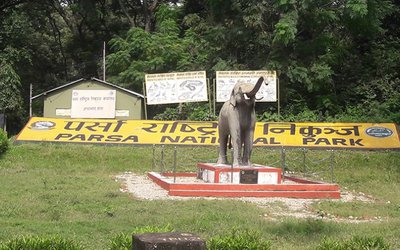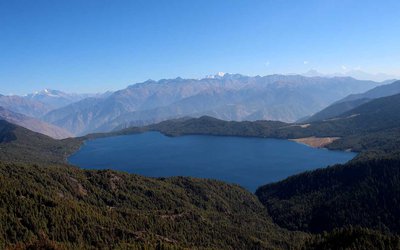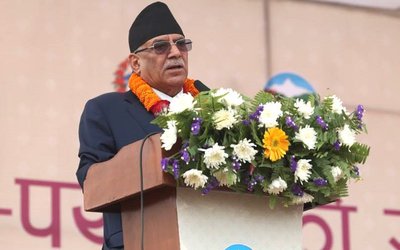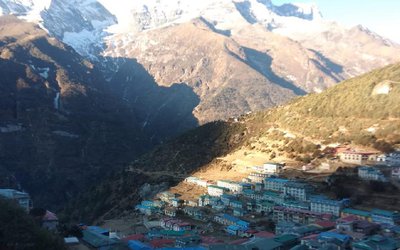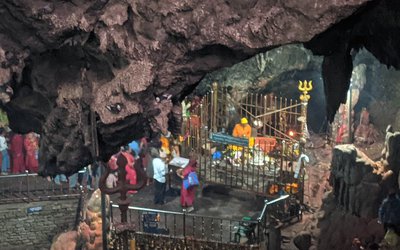Mountains are perceived to be the abode of the gods, and people have sought to obtain religious merit points (punyain Sanskrit, sonamin Tibetan) by ascending mountains to pray. Moses, Mohamed, and Shiva all have important associations with mountains. Mountain worship in the Andes is also well-known. Pilgrims since immemorial times have climbed up the mountains to worship their deity.
Unfortunately, many pilgrims ascending mountains suffer from mountain sickness and characteristically die quietly. If a trekker dies at high altitude, the incident is usually reported widely; furthermore, high altitude pilgrimage sites usually do not have the same allure as Mount Everest. Yet many thousandsof pilgrims travel to high altitude regions in the Himalayas to pray. During Janai Purnima, in many parts of Nepal, mostly high altitude areas, there will be celebration of Lord Shiva. Since many Nepali pilgrims will be going to Gosainkunda, it is relevant here to examine the magnificent spiritual myth that is associated with this pilgrimage.
On Aug1, 2012, the eve of Janai Purnima, the Gosainkunda lake (4300m) will be the venue for the climactic enactment of the greatest Vedic tradition. Before we discuss the health issues of ascending to Gosainkunda for a sacred dip in the lake, a word about the origin of this magnificent ritual is crucial.
In their quest for amrit (the elixir for spiritual immortality), the Titans and the Gods collaborated in churning the ocean. Mount Mandara was selected as the churning stick. Vasuki, the King of Serpents, churned rope, and Vishnu himself, in the form of a tortoise, dove into the ocean to support with his back the base of the mountain. After Vasuki had been wrapped around the mountain, the Titans laid hold of one end of the rope and the Gods the other. They churned for a thousand years.
Unfortunately, from the murky depths of the ocean, the first thing to rise was Kalakut, a deadly poison. The operation could not proceed further until someone drank this concoction. Lord Shiva, who was aloof and sitting at a distance, approached. He shook himself from his deep meditation and, like Clint Eastwood, surveyed the scene. Then, he swallowed the poison in one gulp, and his throat promptly turned blue (Nilakhanta, Blue Throat, is another name for Shiva). He needed to cool off the immense heat generated by Kalakut, so he dove into the Gosainkunda Lake. In the memory of this selfless act by Lord Shiva, pilgrims annually take a holy dip in the lake and wash away their sins. But, just like how it was for the great Shiva, this pilgrimage is not risk-free.
Starting from Dunche, in Rasuwa district, it is best to take four to five nights to reach the lake so that you are properly acclimatized. You need to listen to your body and not push ahead relentlessly, disregarding symptoms of acute mountain sickness (AMS), which are chiefly headache and nausea. Taking diamox, unless you have sulpha allergy, will help to prevent and treat AMS. Drinking two litres of clean water (boiled or treated with chlorine/iodine tablets) every day will help avoid dehydration. Proper rain gear and some table salt to deal with leech bites will come in handy. The lake area is completely packed during Janai Purnima so being psychologically prepared for some of the hardship will help. However, you will be amply rewarded for your efforts.
- TANAHU HYDROPOWER PROEJCT: A Significant Achievement
- Apr 15, 2024
- AMBASSADOR HANAN GODAR: Sharing Pain With A Nepali Family
- Mar 30, 2024
- VISIT OF KfW AND EIB TO NEPAL : Mission Matters
- Mar 25, 2024
- NEPAL BRITAIN SOCIETY: Pratima Pande's Leadership
- Mar 24, 2024
- NEPAL ARMY DAY: Time To Recall Glory
- Mar 15, 2024


